 "Abusers exploit, lie, insult, demean, ignore (the "silent treatment"), manipulate, and control...There are many ways to abuse. To love too much is to abuse. It is tantamount to treating someone as an extension, an object, or an instrument of gratification. To be over-protective, not to respect privacy, to be brutally honest, with a sadistic sense of humour, or consistently tactless - is to abuse...To expect too much, to denigrate, to ignore - are all modes of abuse. There is physical abuse, verbal abuse, psychological abuse, sexual abuse. The list is long. Most abusers abuse surreptitiously. They are "stealth abusers". You have to actually live with one in order to witness the abuse." from "What is abuse" by Sam Vaknin.
"Abusers exploit, lie, insult, demean, ignore (the "silent treatment"), manipulate, and control...There are many ways to abuse. To love too much is to abuse. It is tantamount to treating someone as an extension, an object, or an instrument of gratification. To be over-protective, not to respect privacy, to be brutally honest, with a sadistic sense of humour, or consistently tactless - is to abuse...To expect too much, to denigrate, to ignore - are all modes of abuse. There is physical abuse, verbal abuse, psychological abuse, sexual abuse. The list is long. Most abusers abuse surreptitiously. They are "stealth abusers". You have to actually live with one in order to witness the abuse." from "What is abuse" by Sam Vaknin.Listen up. The Daddy knows that some of you have heard that October is Breast Cancer Awareness Month. But it's also Domestic Violence Month. Both are important. We need to learn more about both. Toward that end, The Daddy received permission from fungkeblackchik to print this excellent article on how domestic violence hurts not only the intended victim but families and communities. Thank you, sister.
On top of October being Breast Cancer Awareness month, it is also Domestic Violence Awareness month. I’m sure some people may have known/or know someone who was/is a victim of domestic violence or maybe a victim themselves. The story you’re about to read is about a friend of mine, who I’ll call “Tricia”.
“My mother always told me that no man should ever lay his hands on a woman. My father always told me that any man who hit a woman was one of the biggest cowards to walk the face of the earth. So you’d think I would expect more out of a relationship?
Wrong.
My story is the typical love gone wrong. Sure he seemed like the perfect man. I didn’t want for anything and never had to ask for anything. I loved his family and his family took me in as one of their own. After our 2nd year of dating, we moved in with each other and talks of marriage was always a subject of conversation.
Literally, that night I didn’t know what hit me. Out of the blew, square to the right side of my face, his fist landed.
It was a normal night at home. I cooked dinner and we sat down as usual and ate together. For some reason I could see tension in his face and his usual tone was now monotone. I got up and gathered up the plates and started washing the dishes. As I was washing the dishes, I asked him what was wrong, once again.
“Nothing!”, he snapped back at me.
As I had my back turned to him, he approached me from behind and handed me my cell phone. He pulled up the address book and questioned why did I have my ex-boyfriend’s phone number in it. I explained to him that occasionally we still talk, because we still have a lot of friends in common.
That’s when he hit me.
All I remember was a dish dropping on the floor. He told me I had no reason in talking to him. In between tears I reassured him there was nothing going on. I couldn’t believe what happened. I was in shock. All over my phonebook.
He left the kitchen and went to bedroom and shut the door.
I was now a victim. My life flashed before my eyes. I could either stay or leave. It doesn’t take much for me to fear for my life and I picked leaving. The next day after he left for work, I packed my belongings and left.
He has not heard from me since.”
~Tricia
No one wants to become a statistic but occasionally it may happen to someone. Tricia became a statistic when her once loving boyfriend decided to lay his hands on her. Unlike a lot of women, Tricia didn’t give second chances. She knew after he hit her that she had to leave. Even though he begged and pleaded, she knew that she didn’t want to take any chances.
Below are some statistics in regards to violence against women:
- On the average, more than three women are murdered by their husbands or boyfriends every day.1
- 92% of women say that reducing domestic violence and sexual assault should be at the top of any formal efforts taken on behalf of women today.2
- 1 out of 3 women around the world has been beaten, coerced into sex or otherwise abused during her lifetime.3
- 1 in 5 female high school students reports being physically and/or sexually abused by a dating partner. Abused girls are significantly more likely to get involved in other risky behaviors. They are 4 to 6 times more likely to get pregnant and 8 to 9 times more likely to have tried to commit suicide.3
- 1 in 3 teens report knowing a friend or peer who has been hit, punched, slapped, choked or physically hurt by his/her partner.4
- As many as 324,000 women each year experience intimate partner violence during their pregnancy. 5
- Violence against women costs companies $72.8 million annually due to lost productivity.6
- Ninety-four percent of the offenders in murder-suicides were male.7
- Seventy-four percent of all murder-suicides involved an intimate partner(spouse, common-law spouse, ex-spouse, or boyfriend/girlfriend). Of these, 96 percent were females killed by their intimate partners.7
- Most murder-suicides with three or more victims involved a “family annihilator” — a subcategory of intimate partner murder-suicide.Family annihilators are murderers who kill not only their wives/girlfriends and children, but often other family members as well,before killing themselves.7
- Seventy-five percent of murder-suicides occurred in the home.7
Thankfully there are women out there who realize that they don’t have to become a perpetual victim. They realize their own value and potential. For those women out there who continue to allow the abuse happen to them, you can only pray for them and offer them your support.
If you know of anyone who is being abused, pass on this number to them or make the call yourself:
1-800-799-SAFE (7233)
1-800-787-3224 (TTY)
The National Domestic Violence Hotline answers more than 19,500 calls per month from victims, survivors, friends and family members, law enforcement personnel, domestic violence advocates and the general public. Hotline advocates provide support and assistance to anyone involved in a domestic violence situation, including those in same-sex relationships, male survivors, those with disabilities and immigrant victims of domestic violence. All calls to the National Domestic Violence Hotline are anonymous and confidential.
1. Bureau of Justice Statistics Crime Data Brief, Intimate Partner Violence, 1993-2001, February 2003.
2. Progress & Perils: New Agenda for Women, Center for the Advancement of Women. June 2003.
3. Silverman, Jay G., Raj, Anita, and Clements, Karen. “Dating Violence Against Adolescent Girls and Associated Substance Use, Unhealthy Weight Control, Sexual Risk Behavior, Pregnancy, and Suicidality.” Pediatrics, August 2004.
4. Teenage Research Unlimited. Findings from study commissioned by Liz Claiborne Inc. to investigate the level of and attitudes towards dating abuse among American teenagers aged 13 to 18 [online] 2005 Feb [cited 2006 Mar 20]. Available from: URL: www.loveisnotabuse.com/statistics_abuseandteens.htm
5. Gazmararian JA, Petersen R, Spitz AM, Goodwin MM, Saltzman LE, Marks JS. “Violence and reproductive health; current knowledge and future research directions.” Maternal and Child Health Journal 2000; 4(2):79-84.
6. Costs of Intimate Partner Violence Against Women in the United States. 2003. Center for disease Control and Prevention, National Center for Injury Prevention and Control. Atlanta, GA/
7. Violence Policy Center (VPC), American Roulette: Murder-Suicide in the United States, April 2006.



















































.gif)






















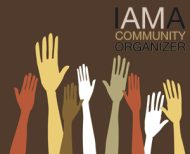


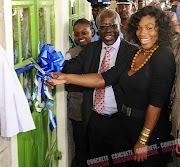


























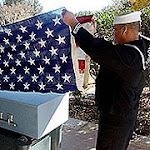






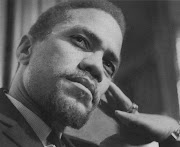


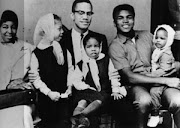








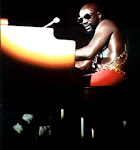








10 comments:
This is a good post Daddy! I am glad to see our brothers speaking out on the subject of Domestic Violence. We need as many aware people to remind our sistas to get out and do so ASAP!
Very nice read, sad, but nice and very informative. Good job Daddy!
Penn & Teller had an interesting edition of their cable show, about anger management. One of the most intriguing parts for me was that some people believe firmly that anger-management classes don't work for spouse batterers; instead of getting them to halt their abusive behaviour, the classes teach them how to become better at manipulating their spouses. In your experience, MacDaddy, do you think this could be true?
Stimpson: If a person has been convicted of domestic violence, they usually are not sent to anger management classes. They're sent to domestic violence classes. Studies show that these classes are mixed.
I set up many of these classes. On the whole, I think these classes are good. But after a year, it's unclear whether the persons stops battering.
Now, in the better classes, men are confronted on their behavior and sort of nurtured to be honest about their behavior. I've found this to be powerful stuff for all the participants. But, yes, it's quite possible that men or women could use these classes to manipulate not only women but the legal system endeavoring to protect them.
Thanks for your insight, MacDaddy.
Thanks for this sobering information, MacDaddy....Sadly, I believe that Tricia is the exception to the rule. I am in relationship/friendship with MANY women in my inner city neighborhood, and more often than not, the women stay in the abusive relationship.....Are there any programs for women who are abused? Seems as if there is more help for the abuser than for the abused.......I do massage, mostly for women, and I believe it is very healing for them....
Thanks for re-posting Funke Blak Chik's article; I just left her a comment.
Your comment here about your experience setting up classes for abusers was interesting. Mac, I don't know you've thought of writing a post about that, but if so, I think it would be really interesting.
Kit: Good idea. And of course I should do it during domestic violence month. I'll see what I can do.
Great post. It never hurts to remind people about this really tough issue.
I'm helping promote a book about the healing of men who have been sexually abused. I hope you will find this information useful. Preventing abuse is obviously the best, but part of acknowledgement is the effort to promote healing for those who have been hurt.
Thomas Edward knows first-hand the emotional and physical pain associated with sexual abuse and neglect. He understands what it’s like to suffer in silence with nowhere to turn. And he’s passionate about helping other male survivors heal from the aftermath of their abuse and move from surviving to thriving.
Tom wrote Healing a Man’s Heart, a workbook designed to help Christian men face, admit, and deal with their abuse. He says, “I wrote this workbook for men who are stuck just like I used to be—men whose hearts long to be set free, but fear dampens and steals any ray of hope.” His goal is for men to become comfortable addressing the issues within them and eventually arrive to a point of breaking the silence.
Tom also conducts “Healing Broken Men” workshop retreats, which are great for participants to start or continue their healing in a safe, private, and supportive environment. Workshop sessions include losing the victim status, removing the fear factor, destroying lies and myths, repainting your picture with truth, and reclaiming God’s identity for you.
For more information about Thomas Edward, the Healing a Man’s Heart workbook, or the Healing Broken Men workshops, visit www.healingbrokenmen.com.
Thank you for writing about domestic violence and sharing the story about "Tricia" -- It does make us all feel good when a woman turns and walks, or runs away the first time it happens. Unfortunately most women, whether people can understand it or not, do not want to leave. And in some cases as we know, women are killed by their abusers when they have left. But many women stay because they truly believe things can change; or maybe they don't feel they can leave due to all the barriers they face. Immigrant women face multiple challenges and many have told us they don't want to leave--but they do want the violence to stop; so those of us that are committed to addressing domestic violence must learn how to work differently with women, children, and men. Only a small percentage of women go to shelters. Most remain in their home and in community. And yes, we need our brothers to stand up and speak out -- women, families, and your male friends need you. Thank you MacDaddy for being one of those men.
Post a Comment